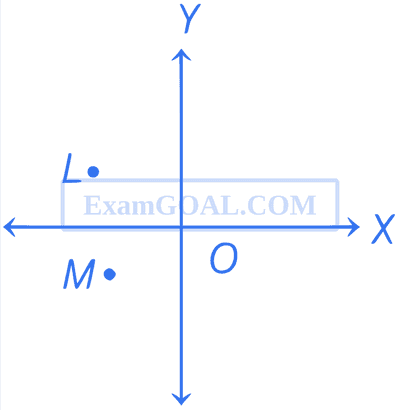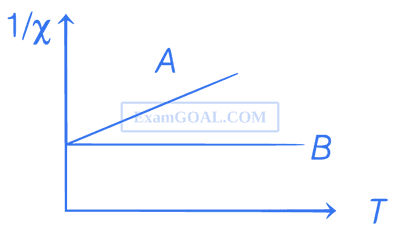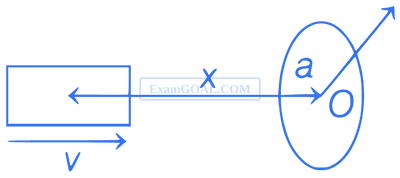Magnetism · Physics · WB JEE
Subjective
MCQ (Single Correct Answer)
A particle of charge ' $q$ ' and mass ' $m$ ' moves in a circular orbit of radius ' $r$ ' with angular speed ' $\omega$ '. The ratio of the magnitude of its magnetic moment to that of its angular momentum depends on
A charged particle moving with a velocity $$\vec{v}=v_1 \hat{i}+v_2 \hat{j}$$ in a magnetic field $$\vec{B}$$ experiences a force $$\vec{F}=F_1 \hat{i}+F_2 \hat{j}$$. Here $$v_1, v_2, F_1, F_2$$ all are constants. Then $$\overrightarrow{\mathrm{B}}$$ can be
A wire carrying a steady current I is kept in the x-y plane along the curve $$y=A \sin \left(\frac{2 \pi}{\lambda} x\right)$$. A magnetic field B exists in the z-direction. The magnitude of the magnetic force in the portion of the wire between x = 0 and x = $$\lambda$$ is

A bar magnet falls from rest under gravity through the centre of a horizontal ring of conducting wire as shown in figure. Which of the following graph best represents the speed (v) vs. time (t) graph of the bar magnet?

Two infinite line-charges parallel to each other are moving with a constant velocity v in the same direction as shown in the figure. The separation between two line-charges is d. The magnetic attraction balances the electric repulsion when, [ c = speed of light in free space ]
An electron revolves around the nucleus in a circular path with angular momentum $$\overrightarrow L $$. A uniform magnetic field $$\overrightarrow B $$ is applied perpendicular to the plane of its orbit. If the electron experiences a torque $$\overrightarrow T $$, then
A straight wire is placed in a magnetic field that varies with distance x from origin as $$\overrightarrow B = {B_0}\left( {2 - {x \over a}} \right)\widehat k$$. Ends of wire are at (a, 0) and (2a, 0) and it carries a current I. If force on wire is $$\overrightarrow F = I{B_0}\left( {{{ka} \over 2}} \right)\widehat j$$, then value of k is
A horizontal semi-circular wire of radius r is connected to a battery through two similar springs X and Y to an electric cell, which sends current I through it. A vertically downward uniform magnetic field B is applied on the wire, as shown in the figure. What is the force acting on each spring?


Consider two infinitely long wires parallel to Z-axis carrying same current I in the positive z-direction. One wire passes through the point L at coordinates ($$-$$1, +1) and the other wire passes through the point M at coordinates ($$-$$1, $$-$$1). The resultant magnetic field at the origin O will be

For two types of magnetic materials A and B, variation of $$1\over\chi$$ ($$\chi$$ : susceptibility) versus temperature T is shown in the figure. Then,

As shown in the figure, a single conducting wire is bent to form a loop in the form of a circle of radius r concentrically inside a square of side a, where a : r = 8 : $$\pi $$. A battery B drives a current through the wire. If the battery B and the gap G are of negligible sizes, determine the strength of magnetic field at the common centre O.

As shown in the figure, a wire is bent to form a D-shaped closed loop, carrying current I, where the curved part is a semi-circle of radius R. The loop is placed in a uniform magnetic field B, which is directed into the plane of the paper. The magnetic force felt by the closed loop is

"The loop will .........".

MCQ (More than One Correct Answer)

As shown in figure, a rectangular loop of length 'a' and width 'b' and made of a conducting material of uniform cross-section is kept in a horizontal plane where a uniform magnetic field of intensity B is acting vertically downward. Resistance per unit length of the loop is $$\lambda$$ $$\Omega$$/m. If the loop is pulled with uniform velocity 'v' in horizontal direction, which of the following statement is/are true?

A small bar magnet of dipole moment M is moving with speed v along x-direction towards a small closed circular conducting loop of radius a with its centre O at x = 0 (see figure). Assume x >> a and the coil has a resistance R. Then, which of the following statements is/are true?